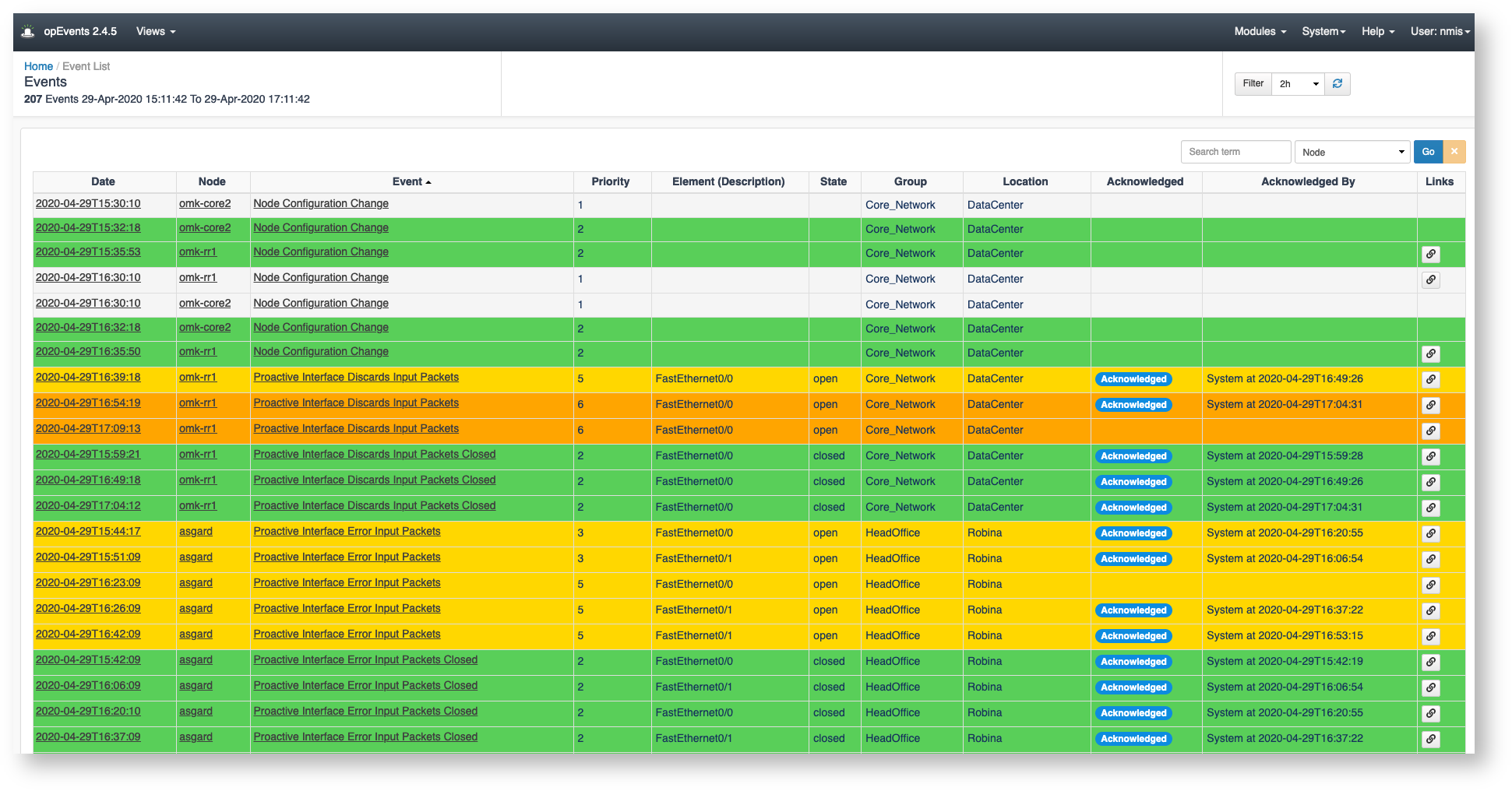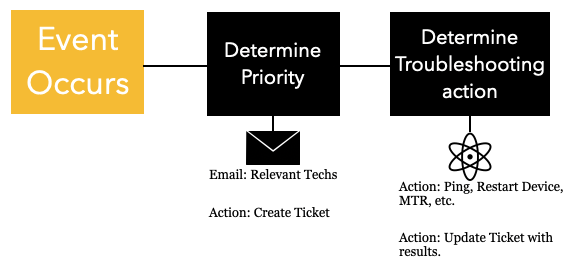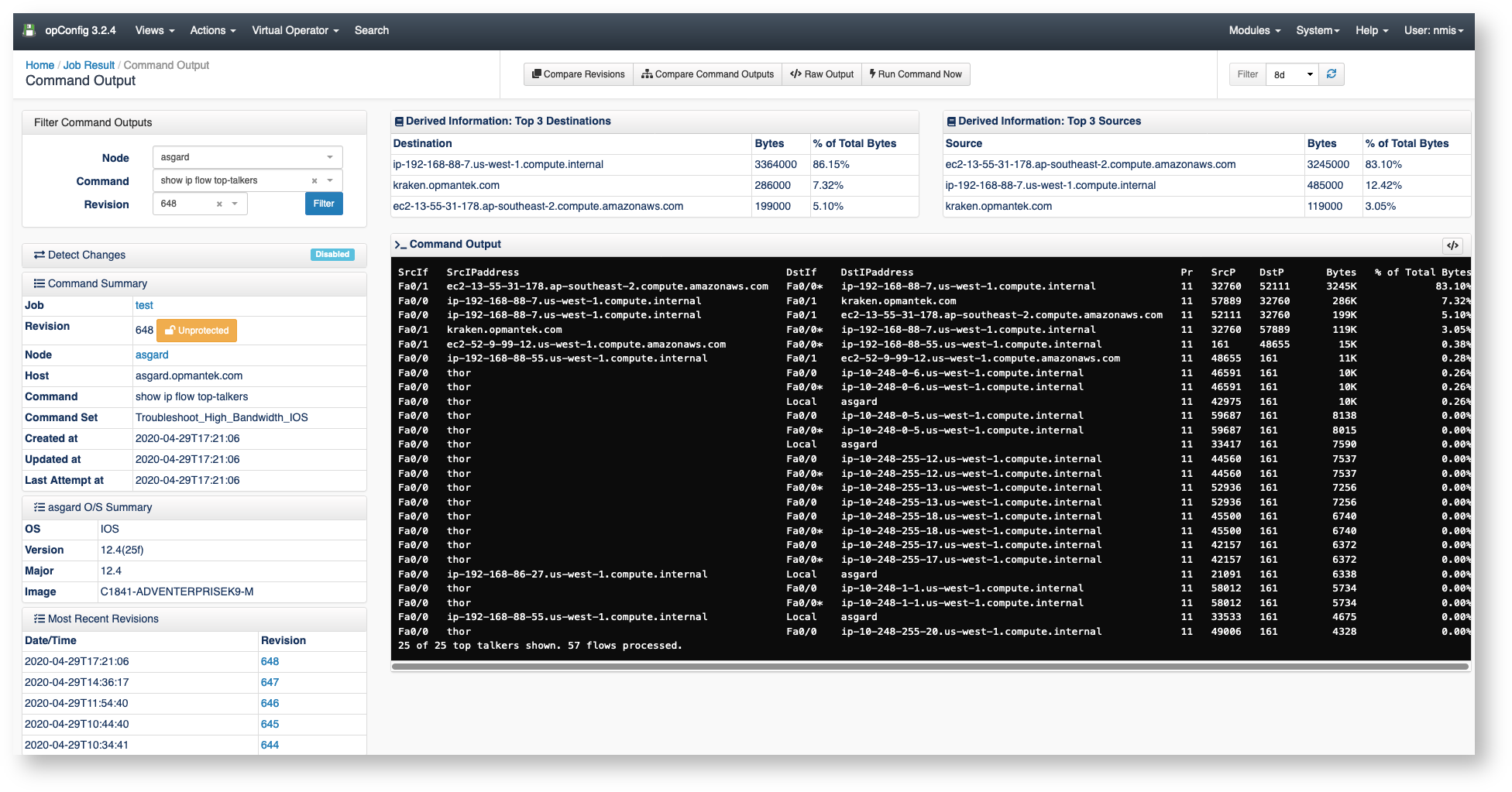Thought process
opEvents ships with a lot of features but what it ships with is not all that it can do. Opmantek's various modules are meant to be tinkered with to give you a product that works specifically for you. With a little thought and planning you and your team can make opEvents and other Opmantek modules act as if they were made custom for your organization.
So opEvents is set up and running and you are able to see every event that is occurring. You are happy knowing any time an event pops up you can clearly see it as well as dig into the event details however, there is still work to be done once the event occurs. You notice one event in particular keeps displaying in the event list. Every time this event shows up you keep having to run the same few commands to troubleshoot and resolve the issue. Ask yourself, "How can I bridge the gap from where our process is now to leveraging the tools I have to get to where I want to be?". You remember that opConfig can run commands automatically and you begin brainstorming on how you can get these modules to do the work so you or your team don't have to.
Basic event automation
Event automation can be completed in four steps:
- Identify the top network events you respond to frequently (daily, weekly, etc.)
- List the steps you take to troubleshoot and remediate when the issue occurs.
- Identify how these steps can be automated.
- Create an action to respond to the event.
Step 1: Identify top network events you respond to frequently.
Gather up a group of your architects, NOC engineers, customer service representatives, etc. and list the top 3-4 issues that each group deals with commonly.
You may already have an idea of what network events you and your team respond to frequently but should you need a little help you can take a look at the Events view in opEvents.
More information on opEvents and its features can be found HERE
Step 2: List the steps taken to troubleshoot and remediate issues.
From the list of top network events gathered in step 1 figure out what are the steps and processes your team typically takes to troubleshoot and remediate these events. Gather examples of each issue from your team members and come up with a plan.
Step 3: Identify how these steps can be automated.
With the information from step 1 and step 2 you can then figure out how to automate these actions by leveraging the tools you have in your Opmantek arsenal.
Step 4: Create an action to respond to the event.
You and your team decide to use the Virtual Operator feature in opConfig to simplify and automate troubleshooting. Any time one of these common events comes in you have a plan for immediate troubleshooting and remediation.
Where to go from here?
You now have your top events automatically troubleshooted, tickets automatically created, relevant employees alerted and remediation completed. Next, you may want to gather up that same group of NOC engineers, customer service representatives, etc. and again discuss the next batch of top network events. Now that these common issues are taken care of what are the next top network events we can follow this same process with to automatic event resolution. Eventually by following and repeating this same process you could have an almost fully autonomous network.



